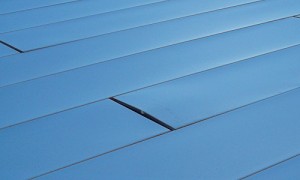As the temperatures begin to fall in Philadelphia, the side walls of your rowhome feel warm, but cold air seems to flow freely through the walls on the front and back of your home. Since heat rises, all the warm air in your home might travel upwards, only to escape out of an uninsulated roof or attic. What you need is insulation to keep your home warm through the winter and to help reduce your energy bills. Understanding your options when it comes to insulation types will help you make the right choice for your home.
Insulating the Roof or Attic
If you happen to live in a Philadelphia rowhouse that does have an attic, one easy way to stop the warm air from seeping out of your home is to add fiberglass insulation to the attic. Insulation types that work well in attic spaces include blown in fiberglass or fiberglass batts. The Philadelphia Rowhouse Manual advises against stuffing the floor or walls of your attic too tightly with the insulation. Instead, you want to fill the area loosely, so that there’s room for air to circulate.
Plenty of rowhouses in Philadelphia don’t come with attics, but instead have flat roofs. The process for insulating attic-free homes is slightly different, since there’s no floor or wall to insulate. Instead of using fiberglass blown-in insulation or batting, it’s usually recommended that you use foam boards or structural insulated panels between the roof’s material and the decking. Foam boards are typically a lot smaller in size that fiberglass options, but provide a lot of insulation. According to HouseLogic, rigid boards such as structural insulated panels tend to cost more than fiberglass or other options, but also provide greater energy savings.
Insulating the Walls
The structure of many rowhouses in Philly can make insulating the walls a bit tricky. In many cases, adding insulation to the interior front and back walls can be a major project, as the walls are typically made of solid plaster, which can be filled by blown-in insulation. The masonry or brick exteriors of many Philadelphia homes can also pose a challenge.
Your best option for adding insulation is to position pieces of wood or metal along the walls, putting fiberglass batts between the pieces. Finish the project by covering the wood or metal and insulation with drywall. Adding insulation in this manner will mean that your home’s interior becomes a bit smaller. But what you lose in space, you’ll make up for in warmth.
Go Pro or DIY?
Once you’ve figured out the insulation types that are most appropriate for your home, the big question is: Do it yourself or hire a professional contractor? While it might seem easy enough to add some types of insulation, such as fiberglass batts in the attic, others require professional installation — for example, foam boards added during a roof update or blown-in insulation.
Even if you’re confident in your fix-it skills, if you’re not familiar with the city’s rules for adding insulation or are unsure of what type of insulation will work best in your home, hiring a licensed contractor might just be your safest option. Adding insulation to your Philadelphia home before the freezing winter weather hits means you’ll enjoy more heat in your home and more money in your wallet.
Image Source: Flickr/Jeff Egnaczyk
[cf]skyword_tracking_tag[/cf]







[…] post Insulation Types and Options for Philly Rowhouses appeared first on Coldwell Banker Blue […]
[…] Insulation Types and Options for Philly Rowhouses Insulation Types and Options for Philly Rowhouses […]
[…] Insulation Types and Options for Philly Rowhouses […]
[…] Insulation Types and Options for Philly Rowhouses […]
Nice article about insulation.thanks for posting.
Well, brick walls actually help insulation. It can actually help you save money on your energy bills as stated here